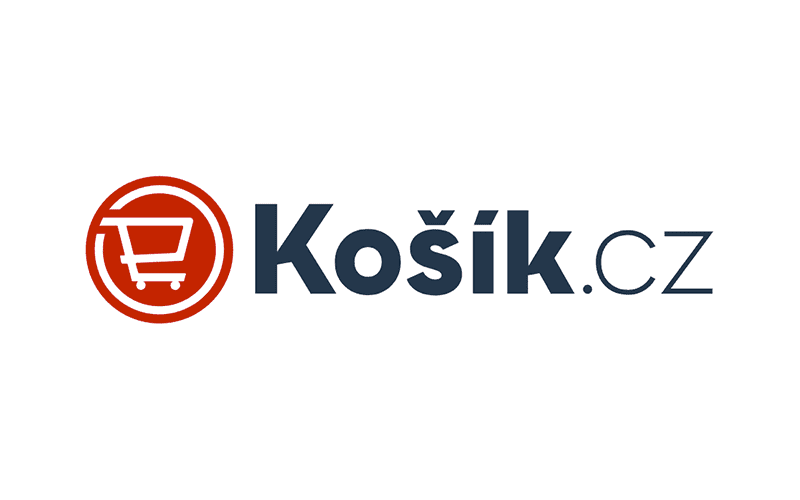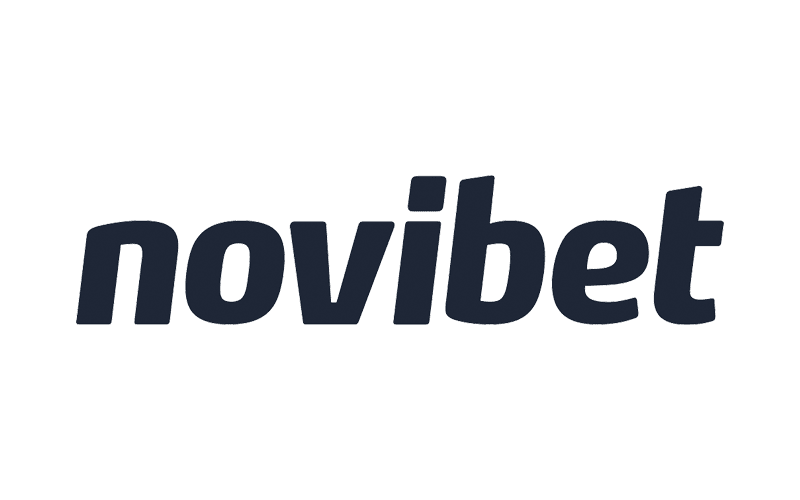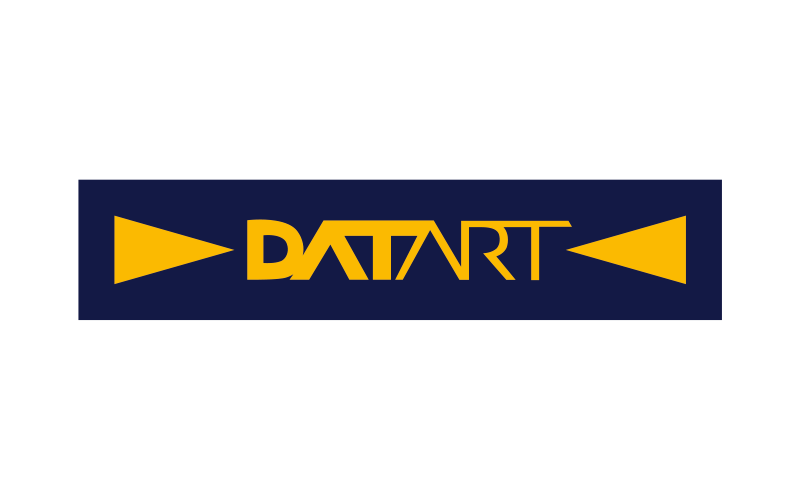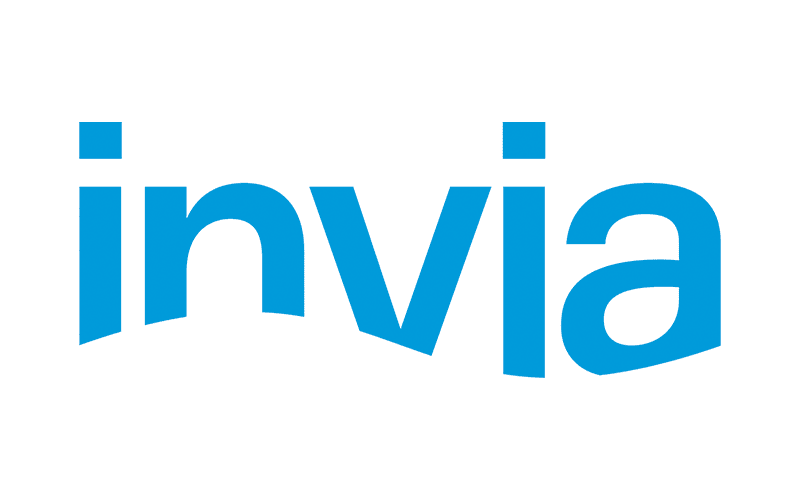Data collection and measurement
Informed decisions can be made only when data is comprehensively collected and measured, leaving no room for guesswork.
Why is measurement so crucially important, yet underestimated?
Without precise measurement, your marketing decision-making is a bit like an airplane flying in a fog. Let's have a clear blue sky - our Data Collection and Measurement services establish a seamless process to gather, process and analyze all data that is available from different sources. From then on, actionable insights generation and their activation can be put in place.
Why focus on
collection and measurement?
1
Data-driven
insights
Your targeting and campaign orchestration will be much more powerful.
2
Better customer understanding
Create messaging and content that strikes the chord with your customer.
3
Improve
performance
Quick wins and long-term success - all of them start with correct measurement and insights.
Key* Components of Data Collection
Data collection and measurement involve various aspects, including sources like websites, apps, social media, and advertising platforms. Tracking codes capture user interactions for analysis.
Methods ensure privacy compliance. Data is stored and processed for insights. Reporting presents data through dashboards. Governance ensures compliance and ethics.
Solution
details & steps
A web and app measurement audit involves assessing the methods and tools used to track and analyze user interactions, behaviors, and performance. The audit aims to ensure accurate data collection, proper implementation of tracking codes, and alignment with business goals. By conducting a comprehensive audit, organizations can identify areas for improvement, optimize measurement processes, and gain valuable insights to drive data-driven decision-making and enhance user experiences.
Challenges
Data Accuracy and Integrity:
Ensuring the accuracy and integrity of the collected data can be a significant challenge. Various factors can impact data accuracy, such as improper implementation of tracking codes, data discrepancies across different platforms, data sampling issues, and data quality problems. Inconsistent or inaccurate data can lead to incorrect insights and misinformed decision-making. It is crucial to identify and address these challenges to maintain reliable and trustworthy data for analysis.
Technical Implementation and Configuration:
Implementing tracking codes and configuring measurement tools correctly can be complex, especially when dealing with multiple platforms, devices, and technologies. Challenges may arise in accurately tracking user interactions across different web pages, apps, and devices, as well as handling cross-domain tracking and ensuring data consistency. Additionally, integrating various measurement tools and platforms can require technical expertise and proper configuration to ensure seamless data flow and compatibility.
Privacy and Compliance:
Maintaining compliance with privacy regulations, data protection laws, and user consent requirements presents a significant challenge in web and app measurement. Organizations must handle personal data responsibly and obtain appropriate consent from users for data collection and processing. Adhering to regulations such as the General Data Protection Regulation (GDPR) and California Consumer Privacy Act (CCPA) requires implementing privacy policies, providing clear opt-in/opt-out options, and ensuring data security. Balancing data collection needs with user privacy rights is crucial and can pose challenges during the measurement audit.
Benefits
Data Accuracy and Reliability:
An analytics implementation audit ensures the accuracy and reliability of the collected data. It involves reviewing the implementation of tracking codes, data collection methods, and data quality assurance processes. By identifying and addressing any discrepancies or issues in the implementation, organizations can ensure that the data collected accurately reflects user interactions, behaviors, and conversions. Reliable data leads to more accurate insights and better-informed decision-making. Comprehensive Tracking and Measurement: An audit helps ensure that all relevant user interactions and events are tracked and measured effectively. It involves reviewing the implementation of tracking codes and configurations to ensure that critical actions and events are properly captured. This includes tracking page views, clicks, form submissions, conversions, and other desired user behaviors. A comprehensive tracking implementation allows organizations to measure and analyze the full customer journey, gaining insights into user engagement and identifying opportunities for optimization.
Actionable Insights and Optimization Opportunities:
By conducting an analytics implementation audit, organizations can uncover actionable insights and identify optimization opportunities. The audit helps in evaluating the effectiveness of current tracking and measurement practices, identifying gaps and areas for improvement. It allows organizations to gain a better understanding of user behaviors, preferences, and pain points. This insight enables them to optimize user experiences, refine marketing strategies, and make data-driven optimizations to improve engagement, conversions, and overall business performance.
In summary, a web and app analytics Measurement implementation audit ensures the accuracy of data, enables comprehensive tracking and measurement, and provides actionable insights for optimization. By conducting such an audit, organizations can make informed decisions, optimize user experiences, and drive better business outcomes based on reliable and comprehensive analytics data.
Web&App analytics measurement implementation refers to the process of setting up and configuring tracking codes and tools to collect and measure user interactions and behaviors on websites and mobile applications.
It involves the proper implementation of tracking codes, defining relevant events and conversions, and ensuring the accurate collection of data for analysis and decision-making. This implementation enables organizations to gain insights into user behavior, optimize user experiences, and make data-driven decisions to improve overall performance.
Challenges
Clear Objectives and KPI Definition:
One of the primary challenges is defining clear objectives and key performance indicators (KPIs) for the analytics implementation. Organizations need to identify what they want to measure, track, and analyze to align with their business goals. Lack of clarity on objectives and KPIs can lead to unfocused implementation, irrelevant data collection, and ineffective analysis. It is crucial to have a well-defined strategy and clear goals in mind before starting the implementation process.
Technical Infrastructure and Resource Availability:
Implementing web and app analytics measurement requires a suitable technical infrastructure and availability of resources. Organizations need to have the necessary tools, technologies, and infrastructure to collect and process the data effectively. This may involve selecting an appropriate analytics platform, setting up tracking codes, ensuring compatibility with different platforms and devices, and allocating resources for ongoing maintenance and monitoring. Lack of technical infrastructure or resource constraints can hinder the implementation process.
Complex Implementation and Configuration:
Implementing web and app analytics measurement can be technically complex. It involves integrating tracking codes and configuring analytics tools across various platforms, devices, and technologies. Each platform may have its own requirements and nuances, and ensuring consistent and accurate data collection across different environments can be challenging. Additionally, setting up advanced tracking features, such as event tracking, e-commerce tracking, or cross-domain tracking, requires technical expertise and proper configuration.
Data Quality and Accuracy:
Ensuring data quality and accuracy is a significant challenge in web and app analytics measurement. Data discrepancies, data duplication, data sampling issues, and incomplete or inaccurate data can impact the reliability of insights and decision-making. Incorrectly implemented tracking codes, outdated or misconfigured analytics settings, or inconsistent data across platforms can all contribute to data quality challenges. Organizations need to regularly monitor and validate data to maintain data accuracy and integrity.
Benefits
Data-Driven Decision Making:
Implementing web and app analytics measurement provides organizations with valuable data insights to drive data-driven decision making. By collecting and analyzing data on user behaviors, interactions, and preferences, organizations gain a deeper understanding of their audience. This data can inform strategic decisions related to website/app optimization, marketing campaigns, product development, and customer experience improvements. Data-driven decision making leads to more targeted and effective strategies, resulting in improved business outcomes.
User Experience Optimization:
Web and app analytics measurement implementation helps organizations optimize the user experience. By tracking and analyzing user behaviors and engagement metrics, organizations can identify pain points, areas of improvement, and opportunities for enhancing user journeys. This knowledge enables businesses to make informed design and content decisions to improve user satisfaction, increase engagement, and drive conversions. Optimizing the user experience leads to higher customer satisfaction, improved retention rates, and increased user loyalty.
Performance Measurement and ROI:
Implementing web and app analytics measurement allows organizations to track and measure the performance of their digital properties and marketing efforts. It provides insights into key performance metrics such as traffic sources, conversion rates, user engagement, and revenue generation. By analyzing these metrics, organizations can evaluate the effectiveness of their marketing campaigns, website/app performance, and overall digital strategies. This data-driven performance measurement enables organizations to allocate resources more effectively, optimize marketing spend, and improve return on investment (ROI).
Privacy-compliant measurement refers to the practice of collecting, analyzing, and using data in a manner that aligns with applicable privacy laws and regulations. It involves implementing measures and safeguards to protect individuals' privacy rights and ensure that data is collected, processed, and stored in a lawful and ethical manner.
Privacy-compliant measurement encompasses several key principles:
Consent and Transparency: Organizations must obtain appropriate consent from individuals before collecting their personal data. This includes providing clear and easily understandable information about the purpose of data collection, how it will be used, and any third parties involved. Transparency ensures that individuals are informed and have control over their data.
Data Minimization and Purpose Limitation: Only the necessary data required for the intended measurement purposes should be collected. Organizations should avoid excessive or unnecessary data collection. Additionally, data should be used only for the specific purposes for which consent was obtained, and it should not be further processed in a manner incompatible with those purposes.
Anonymization and Pseudonymization: To enhance privacy, organizations may employ techniques such as anonymization and pseudonymization. Anonymization removes personally identifiable information (PII) from data, making it impossible to identify individuals. Pseudonymization involves replacing or encrypting PII with a unique identifier, ensuring that the data can no longer be directly linked to an individual without additional information.
Data Security and Protection: Organizations must implement appropriate security measures to protect the data they collect. This includes encryption, access controls, regular data backups, and monitoring to detect and respond to data breaches or unauthorized access. Safeguarding data ensures that it is protected from unauthorized disclosure or misuse.
Compliance with Regulations: Privacy-compliant measurement requires adherence to relevant privacy laws and regulations, such as the General Data Protection Regulation (GDPR) in the European Union or the California Consumer Privacy Act (CCPA) in the United States. Organizations need to understand and comply with the specific requirements of these regulations to ensure lawful and ethical data handling.
Challenges
Complexity of Privacy Regulations:
Privacy regulations, such as the General Data Protection Regulation (GDPR) and the California Consumer Privacy Act (CCPA), are complex and often subject to interpretation. Understanding the intricacies of these regulations and ensuring compliance can be challenging, especially for organizations operating in multiple jurisdictions. Navigating the nuances of consent requirements, data subject rights, data retention, and lawful bases for processing requires expertise and ongoing vigilance to stay updated with evolving privacy laws.
Data Collection and Consent Management:
Collecting and managing data in a privacy-compliant manner presents challenges, particularly regarding obtaining valid consent. Organizations need to establish clear and comprehensive consent mechanisms that provide individuals with meaningful choices and information about data collection and usage. Ensuring proper consent records, managing user preferences, and handling data subject rights requests can be complex and resource-intensive. Implementing robust systems and processes to facilitate consent management is essential for privacy compliance.
Data Security and Protection:
Protecting data from unauthorized access, breaches, and misuse is a critical challenge in privacy-compliant measurement. Organizations must implement appropriate security measures, including encryption, access controls, and regular security audits, to safeguard the data they collect. Ensuring data security across various data storage systems, including cloud platforms and third-party vendors, can be complex. Organizations need to have robust data protection practices and protocols in place to mitigate security risks and maintain compliance with privacy regulations.
Third-Party Data Sharing and Vendor Management:
Organizations often rely on third-party vendors and partners for data processing or analytics purposes. Managing data sharing agreements, ensuring the privacy compliance of vendors, and monitoring their adherence to privacy requirements can be challenging. Organizations need to conduct due diligence on their vendors, establish data protection agreements, and regularly assess their privacy practices. Maintaining control and accountability over data when it is shared with third parties is crucial for privacy compliance.
Benefits
Enhanced Trust and Reputation:
Privacy-compliant measurement builds trust with customers and users. When organizations prioritize the protection of personal data and respect privacy rights, they establish themselves as trustworthy entities. This can lead to increased customer confidence, loyalty, and positive brand reputation. By demonstrating a commitment to privacy compliance, organizations differentiate themselves from competitors and foster stronger relationships with their audience.Regulatory Compliance and Risk Mitigation:
Adhering to privacy regulations, such as the General Data Protection Regulation (GDPR) or the California Consumer Privacy Act (CCPA), ensures organizations comply with legal requirements and avoid costly penalties and legal consequences. By implementing privacy-compliant measurement practices, organizations mitigate the risk of non-compliance and the associated financial and reputational risks. Proactively addressing privacy regulations protects organizations from potential legal disputes and demonstrates their commitment to ethical data handling.Ethical Data Handling and Responsible Practices:
Privacy-compliant measurement signifies an organization's commitment to ethical data handling and responsible practices. Respecting individuals' privacy rights aligns with ethical standards and demonstrates a sense of corporate social responsibility. It shows that organizations prioritize the protection of personal data, only collect what is necessary, and handle it securely and responsibly. Such ethical practices contribute to positive customer perception and can attract privacy-conscious individuals who value their data privacy.Improved Data Quality and Accuracy:
Privacy-compliant measurement often involves implementing robust data management practices, including consent management, data governance, and data security measures. These practices contribute to improved data quality and accuracy. By collecting data with proper consent, organizations ensure that individuals are willing participants in data collection, leading to more reliable and representative data sets. Implementing data security measures helps protect data from breaches and unauthorized access, ensuring data integrity and accuracy.
Online to offline measurement, often abbreviated as O2O measurement, refers to the process of tracking and analyzing customer behavior and interactions across online channels (such as websites, mobile apps, and digital advertising) and offline channels (such as physical stores, call centers, and in-person interactions). It aims to bridge the gap between online marketing efforts and offline conversions or actions taken by customers.
The purpose of online to offline measurement is to understand how digital marketing initiatives and online customer engagement drive offline behaviors, such as in-store purchases, phone inquiries, or visits to physical locations. It enables organizations to evaluate the effectiveness of their online marketing campaigns and assess the impact they have on offline conversions or business outcomes.
Online to offline measurement involves various techniques and methodologies to connect the online and offline data points. This may include tracking unique identifiers (such as customer IDs or phone numbers) across different touchpoints, leveraging technologies like QR codes or coupon redemption systems, using location-based services, or implementing advanced analytics and attribution models.
By analyzing the data collected through online to offline measurement, organizations can gain valuable insights into customer journeys, identify influential touchpoints, optimize marketing strategies, and allocate resources more effectively. It helps organizations understand the full impact of their online efforts on offline conversions, customer engagement, and overall business performance.
Online to offline measurement is particularly valuable for businesses with a physical presence, such as retail stores, restaurants, healthcare facilities, or service providers that rely on in-person interactions. By measuring and understanding the connection between online and offline activities, organizations can make data-driven decisions and create more seamless and integrated customer experiences across both channels.
Challenges
Data Integration and Attribution:
One of the key challenges in O2O measurement is integrating and attributing data from online and offline channels accurately. Online interactions are typically easier to track and measure, thanks to various analytics tools and technologies. However, linking those online activities to specific offline conversions or actions can be complex. It requires sophisticated tracking mechanisms, unique identifiers, and advanced attribution models to connect the dots between online engagement and offline behaviors accurately.Privacy and Consent:
Respecting customer privacy and obtaining appropriate consent for data collection is a significant challenge in O2O measurement. Organizations must navigate privacy regulations and ensure they have the necessary consent mechanisms in place to track and analyze customer behavior across multiple channels. Balancing the need for data collection with customer privacy expectations and legal requirements requires careful attention and compliance with relevant privacy laws such as the General Data Protection Regulation (GDPR) or the California Consumer Privacy Act (CCPA).Data Quality and Accuracy:
Maintaining data quality and accuracy is crucial for O2O measurement. Data collected from various online and offline sources may have inconsistencies, duplicates, or missing information, leading to skewed insights and inaccurate analysis. Ensuring data hygiene practices, implementing data validation processes, and having robust data governance measures are essential to minimize data quality issues. Without reliable and accurate data, organizations may make incorrect assumptions, leading to ineffective marketing strategies and suboptimal business decisions.Technical Infrastructure and Resource Constraints:
Implementing O2O measurement requires a solid technical infrastructure to collect, integrate, and analyze data from multiple channels. It involves the use of various technologies, data management systems, and analytics tools. Organizations need to ensure they have the necessary resources, expertise, and budget to support the infrastructure and ongoing maintenance. Lack of technical capabilities or resource constraints can hinder the implementation of effective O2O measurement practices.
Benefits
Comprehensive Understanding of Customer Journey:
O2O measurement provides organizations with a holistic view of the customer journey, allowing them to understand how online interactions drive offline conversions. By connecting online touchpoints with offline actions, businesses gain insights into the complete customer journey from initial engagement to final purchase. This comprehensive understanding helps optimize marketing strategies, identify influential touchpoints, and deliver a more seamless and personalized customer experience.Data-Driven Decision Making:
O2O measurement enables data-driven decision-making by providing organizations with valuable insights into the impact of their online efforts on offline conversions. By analyzing data from both online and offline channels, businesses can identify successful marketing campaigns, measure the effectiveness of different channels, and allocate resources more effectively. Data-driven decision-making minimizes guesswork and helps optimize marketing spend, resulting in improved ROI and business outcomes.Enhanced Marketing Attribution:
Accurate attribution is a significant benefit of O2O measurement. It allows organizations to attribute offline conversions to specific online marketing activities or touchpoints accurately. By understanding which online campaigns or channels drive offline conversions, businesses can optimize their marketing mix, adjust strategies, and allocate resources based on their performance. Enhanced attribution insights help improve campaign targeting, optimize conversion rates, and maximize the overall impact of marketing efforts.Seamless Customer Experience:
O2O measurement helps create a seamless and integrated customer experience by bridging the gap between online and offline channels. By understanding how customers interact across different touchpoints, organizations can provide consistent messaging, personalized offers, and a cohesive experience across online and offline channels. This integration leads to increased customer satisfaction, loyalty, and a more unified brand perception.
Got a question or want to know more?
Join
50+ customers
Get in touch
Want to find out the real potential* of your data?
Drop your contact details and we will be with you shortly.
FAQs
Check out the most asked questions. If you have any other don’t hesitate to contact us.
Data collection and measurement refer to the process of gathering, analyzing, and interpreting data from various sources, such as websites, mobile apps, social media, and advertising platforms, to gain insights and make informed business decisions.
Data collection and measurement are crucial for understanding customer behavior, tracking marketing performance, and optimizing business strategies. It provides valuable insights that help organizations enhance user experiences, improve marketing efforts, and achieve business goals effectively.
Data collection involves implementing tracking codes, tags, or scripts on digital properties to capture user interactions and behaviors. Measurement utilizes various analytical tools and techniques to process and analyze the collected data, such as data visualization, statistical analysis, and attribution modeling.
Common challenges include ensuring data accuracy, integrating data from different sources, maintaining privacy compliance, and dealing with technical complexities during implementation. Overcoming these challenges is vital to ensure reliable and ethical data-driven decision-making.















